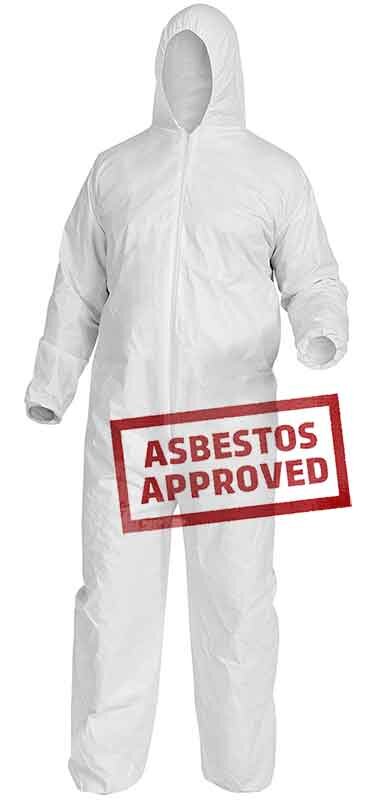Personal protective equipment needed for asbestos removal
The removal of asbestos is a complex process that, in nearly all cases, must be carried out by a professional. There are some instances where removal without a license is legal, but only when the asbestos is non-friable, unbroken, and less than 10m2. Even in those situations, however, consulting an expert is greatly encouraged.
Whether you’re a licensed professional or not, it’s paramount to protect yourself as much as possible before you undertake asbestos removal. Failure to do so can result in death or severe illnesses associated with exposure to asbestos particles. Read on to learn what personal protective equipment (PPE) you require for asbestos removal.
Respirators
Conditions such as asbestosis, mesothelioma, and lung cancer are all caused by asbestos fibre inhalation. The fibres enter the respiratory tract and can stay there for many years, eventually leading to the risk of inflammation, tissue damage, cell damage, and fatal cancers.
You can greatly reduce your risk of harm by wearing a respirator while working with asbestos. In fact, WorkSafe demands it. However, wearing a respirator doesn’t just involve snapping on a facemask and getting started. It must be the right type of mask and the right fit
If you have facial hair, such as a beard or sideburns, then it’s paramount to remove these before you get to work. Facial hair can impact the seal of the respirator, so cleanly shaven is the best approach. The same rule applies to those wearing glasses. If you cannot form a full seal around your face due to glasses, then you may need to wear a positive-pressure air supply hood.
Different respirators are suitable for different asbestos removal conditions. A disposable half-face respirator with a particle filter cartridge is necessary for erecting a protective barrier around asbestos, even though it does not involve handling the dangerous material.
You will also need one for asbestos inspection, collecting samples, working with asbestos cement, removing undamaged asbestos, and carrying out maintenance near asbestos.
Those who will be removing friable asbestos, such as insulation or the replacement of gaskets, you will need a full-face particle respirator. Alternatively, a full suit with continuous flow airline respirator, or a full-facepiece positive-pressure demand airline respirator. All respirators must be fitted with a P3 filter to trap 99.95 per cent of airborne particles.
Overalls
There have been many cases of asbestos-related illnesses in families that don’t relate to workplace attendance. Instead, they have been from something as simple as someone taking asbestos fibres home on their clothing.
Children hugging a parent who has worked around asbestos, and even spouses who wash their clothing, have all been put at risk in such situations. One woman, Deanna Trevarthen, even died in this very situation.
Anyone working with asbestos must wear overalls and clothing that are disposable or washable in a controlled environment. If your clothing is not disposable, then you must only wash it in a laundry that has been set up for the sole purpose of contaminated clothing. Cleaning such clothing at home or publicly can put everyone around you at risk.
Make sure your overalls are specifically approved for Asbestos removal
Footwear
It’s important to wear supportive, comfortable, and durable footwear in a labour-intensive job. However, equally as important as how safe they are during an asbestos removal process. Footwear must be unlaced, or disposable boot covers must be worn. If you feel your footwear has been compromised during a removal process in any way, then correctly dispose of them.
Things to consider when choosing personal protective equipment (PPE) for asbestos management
WorkSafe outline some helpful guidelines for telling you the best equipment to wear and use for asbestos removal. However, there are many things to consider, depending on each unique removal situation.
Workplaces that would prefer not to use disposal work equipment may like to consider the ease of cleaning and decontamination for items and garments that have been exposed to asbestos.
Other things to factor into the decision-making process is how easy it will be to communicate with others while using certain respirators, and how hot the working temperatures are likely to be. Even moving freely with an air-line respirator is something your workplace will need to consider.
How to wear PPE safely
There is no room for error when it comes to asbestos exposure. You’re either exposed or you’re not. That’s why, even if you have the best PPE, you still have to make sure you wear it in the safest manner. Even how you wear your overalls makes a difference. Wear a size larger than you usually would so that they feel more comfortable, and tape all your cuffs to seal your body. Wear your overalls over the top of your boots, instead of tucking them in, as well.
Any RPE straps should be covered with a hood, and wearing as many disposable items as possible can help limit the risk. While reusable products are a growing trend in all industries, asbestos removal is potentially one where this practise should be discouraged.
Be safe to keep others safe
Wearing personal protective equipment keeps you safe in potentially harmful situations, but it also keeps others safe. Whether you’re removing a small section of non-friable asbestos at home, or you’re an asbestos removal expert, the best PPE is key. If you require asbestos removal from experts who abide by all strict rules and regulations, then get in touch today.





